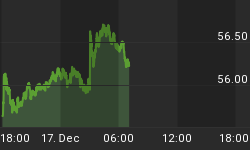In late 2008, when silver was massacred in the futures pit and saw its price fall from over $20 to under $10, I told my readers at that time that silver entered into a "reverse bubble". I know it sounds odd, but let me re-visit the concept.
As you know by now, a "bubble" is when an asset reaches an unsustainably high level due to artificially stimulated demand. In 2004, I wrote that housing was entering a historic bubble because government policies such as excessively (artificially) cheap credit inflated the price of real estate to nose-bleed levels. The real estate mania was everywhere in 2004-2006 as buyers were going berserk.
At the time, I had done a seminar with my favorite real estate expert (David Corsi...look him up!) entitled "Housing Bubble Profits" and detailed my bearish rationale for why I thought that housing was entering a dangerous phase and that real estate investors and speculators would get hammered. The bottom line is that when an asset (real estate, stocks, whatever) gets bid up to high levels artificially (a level way above its' true market price), the next step will be a painful plunge. I go into greater detail in prior essays on the anatomy of a bubble.
In late 2008, I initially wrote about what I thought was a "reverse bubble" in silver. In other words, artificial selling pushed the price of silver below its true market price. For a brief moment toward the end of 2008, the price of silver on the futures market was actually lower than a silver miner's cost of mining it. The culprit was excessive shorting on the futures exchange by several large financial institutions. This excessive short selling in silver futures has been painstakingly documented for many years by one of the world's leading silver analysts, Ted Butler.
I consider Ted Butler, David Morgan and Jason Hommel to be the world's best silver analysts and I highly recommend their research for anyone serious about silver.
Whenever an asset's price is artificially pushed down below its true market price, the resulting move boomerangs to the upside sooner or later (usually sooner). This is essentially a "reverse bubble". What happened to silver?
Silver hit a mind-boggling low of $8.88 (spot price) on November 24, 2008. It then went on a strong rally hitting $48.70 on April 28, 2011. It did touch $49.85 overseas during April 29th. That 29-month rally resulted in a gain of about 461% before a sharp correction in May 2011 took silver to the $30s.
As I write this, silver is hovering around $31 and has been consolidating since mid-2011. Massive shorting by a handful of large institutions had again entered the picture. Has silver entered its second "reverse bubble"?
Judging by the supply/demand data and market machinations (including excessive shorting in the silver futures market), I believe that the answer is a resounding "YES". I won't punish you with the latest data since others do a much better job of analyzing and presenting it (see the latest research from Ted Butler and David Morgan...again, look them up!).
What will silver's price look like a year from now...or 29 months from now? I am on record as forecasting that silver will hit $100 during 2012-2013. If silver were to mirror its percentage run from 2008-2011, then you are talking about silver's price being in the general vicinity of $142. There are some that offer compelling views that silver could easily exceed $200 in the same general time frame.
In the coming months, I will be reviewing and discussing silver's fundamentals in venues such as preciousmetalsinvesting.com and in my free newsletter so I look forward to silver's next rally. How much longer will a buying opportunity still be available?
Given so many positive factors for silver, I think that triple-digit silver is not an "if'...it is a "when".
Got silver?















